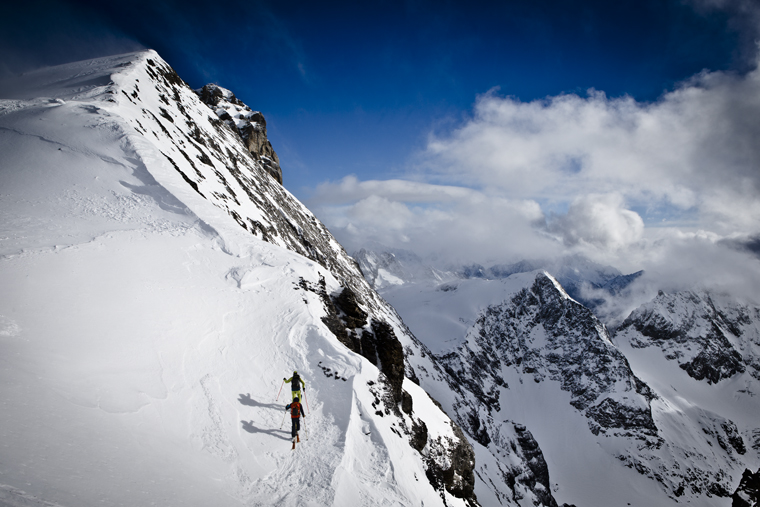How to skin uphill with ease (plus common skinning problems solved)


1. Start with your boots in walk mode, if your boots have one. Clip into your bindings and adjust the buckles so you are comfortable (I usually skin with my boots undone, while other people I ski with regularly have theirs done up).
2. Slide one foot forward, without too long a stride at this point. When your leg is comfortably forward pull your foot back to engage the hairs on the skin, slide the other leg forward. Concentrate on gliding the ball of your foot along the snow then weighting your foot along the length of the ski. Never lift your foot; gliding the ski along the ground is more efficient.
3. Once you have a feel for the skin gripping the snow, point the skis up a gentle incline, thinking about your body position. The most effective position is to have your body in an upright position with your feet shoulder-width apart. This is stable and will allow you to put your weight through the entire length of the ski.
4. Skin gently uphill, and just shuffle round any corners. Concentrate on an upright body position. If your weight is too far forward (most likely), or too far back (less likely), your body weight will be on the front or rear of the ski. As a result not all of the hairs on the skin will engage and the ski will lose traction and shoot out from underneath you.
5. If I am struggling to get my weight where I want it for maximum grip, I think about having my weight pushing down through my heels; this usually helps to spread my weight along the length of the ski.
6. As you feel more comfortable, try lengthening your stride. If you are in touring boots and in walk mode you can develop a nice long stride; if in ski boots the forward lean on the boots will limit your stride length. If the terrain is difficult you will find yourself taking shorter strides, then on easier ground you can stride out. Experiment to find a stride length you feel comfortable with and that you can maintain for long periods of time.
7. Once you feel comfortable skinning around on easier-angled terrain try setting a steeper line. Try heading across the hillside, and you will find that if the snow is soft it is easy to make a track; if the snow is hard you will need to roll the skis downhill to get the most contact between skin and snow. The best way to do this is to think about rolling your knees and ankles downhill.
8. If the snow is really hard you will need to use a bit of a combination of rolling and edging, and this is why it is essential that the metal edge of the ski is exposed each side of the skin, so it can bite into the snow.
As the skinning track becomes steeper the strain on your Achilles tendon and calves increases. If you are flexible this is no problem, but if not you may struggle to keep the weight spread along the length of the ski because you can’t hold an upright body position. If this happens, take an easier-angled track or put up your heel raisers. I try not to use them as I find they unbalance me, make kick turns harder, and if I am setting a track using my raisers the track is often too steep for those following. Where I do use my raisers is when I am breaking trail in soft snow, as the angle created by them helps keep your tips up out of the snow.
